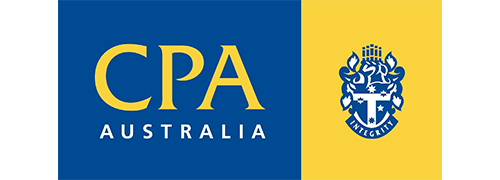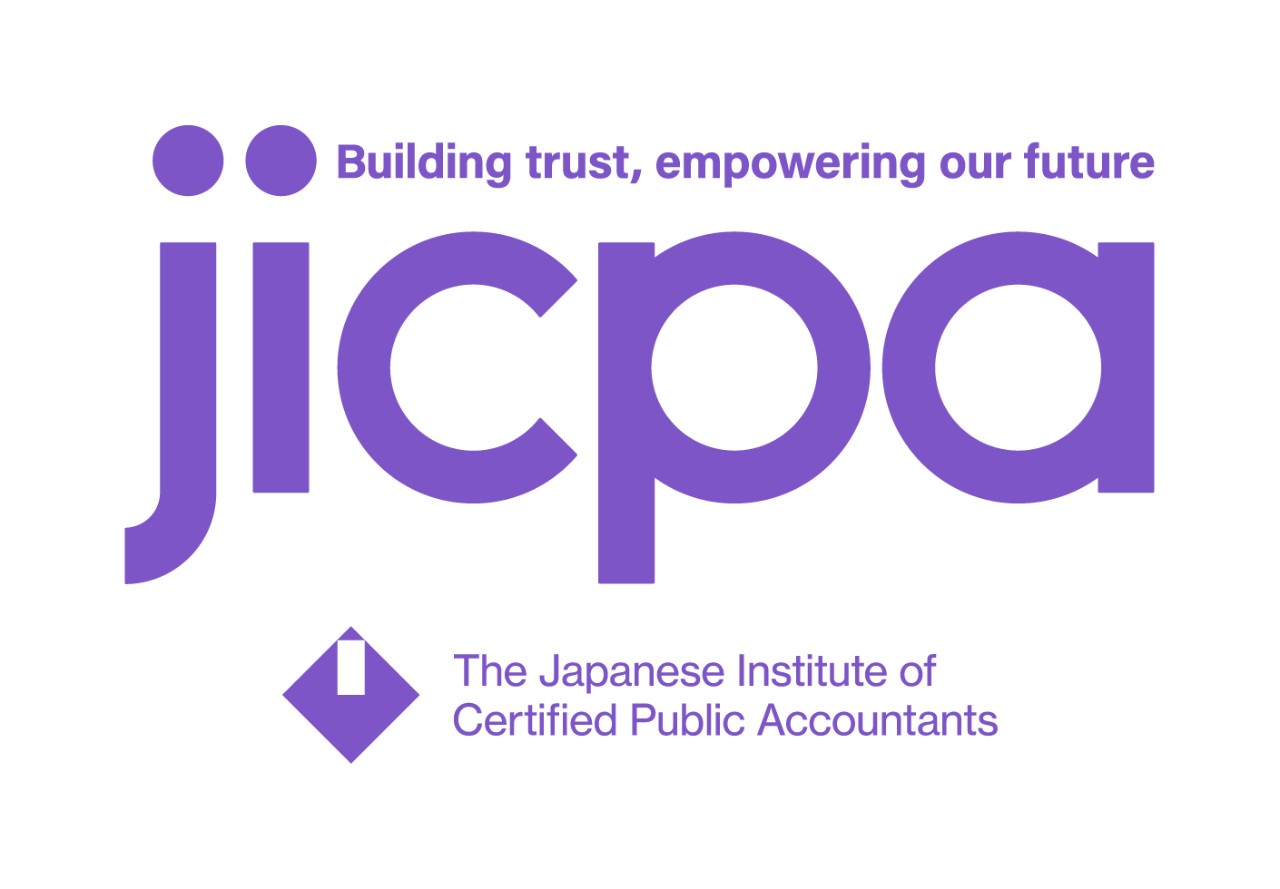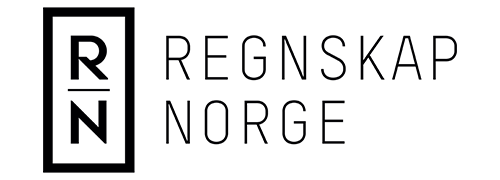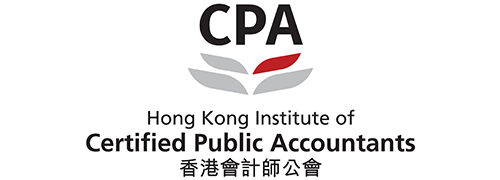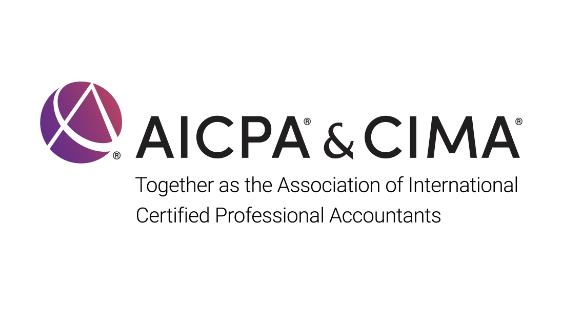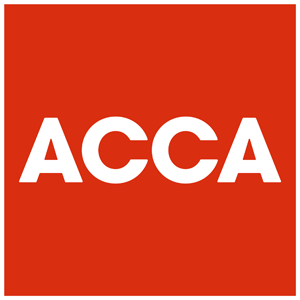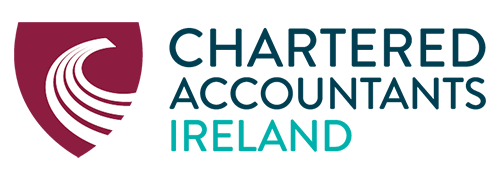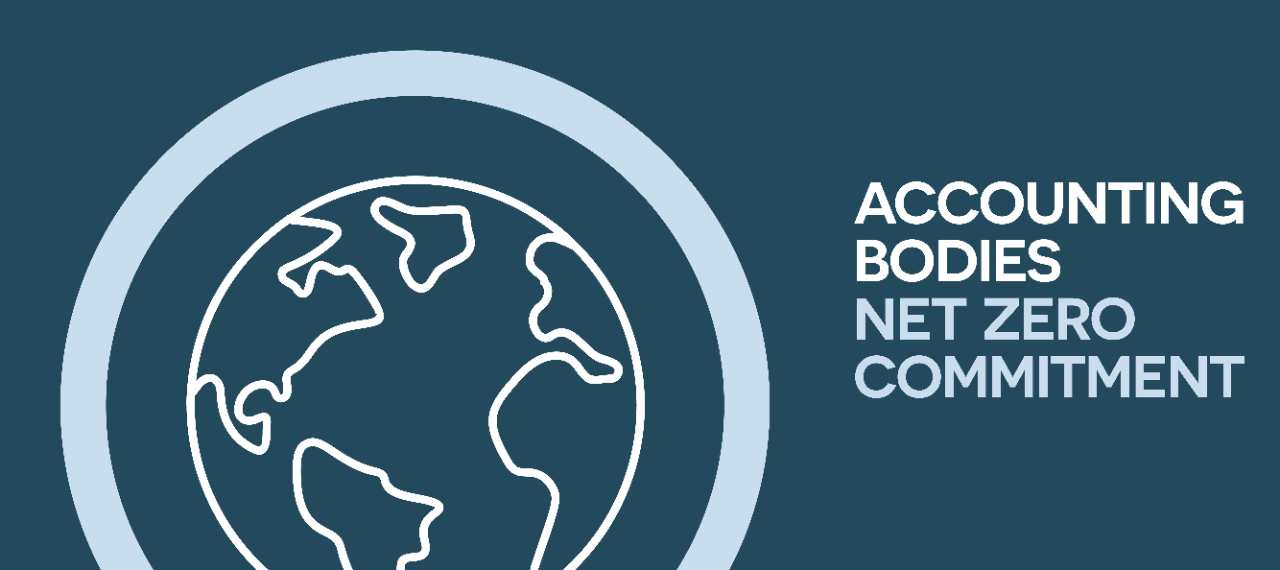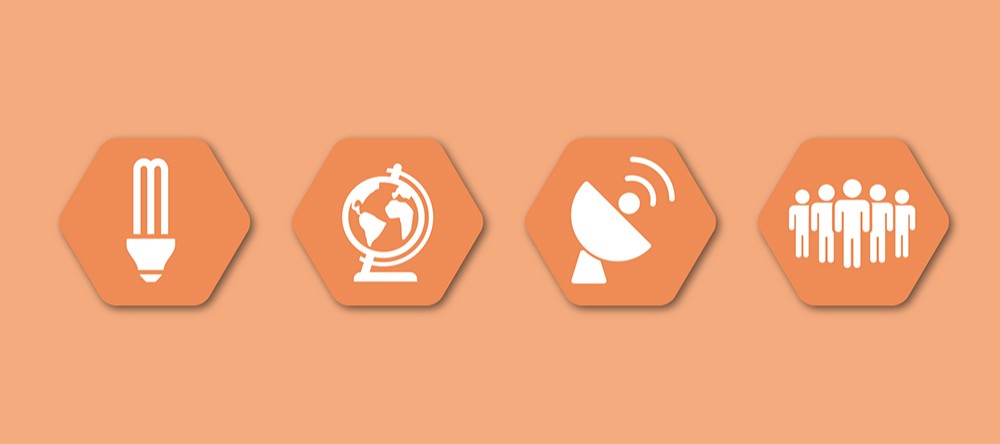Our Journey: The Accounting Bodies’ Road to Net Zero
In October 2021, the chief executives of 14 A4S Accounting Bodies Network (ABN) members signed a commitment to achieve net zero greenhouse gas (GHG) emissions within their own organizations as soon as operationally possible, as well as to provide support for their members to do the same. They share here their combined experience to help others implement their own net zero GHG emissions pathways.
These experiences demonstrate how the operations of the accounting body signatories are changing to progress their net zero ambition. They highlight a range of issues the accounting bodies have had to consider and resolve on their collective journeys. Other organizations will also be considering similar issues as they embark on their own journeys. They include:
- Calculating, disclosing and reducing GHG emissions, including identifying and measuring scope 3 activities, agreeing the pathway to take to do this and measuring the emissions footprint of events.
- Operationalizing the process such as defining the scope of the journey, selecting a baseline year, setting targets and taking staff along the journey with you.
- Deciding ownership of the net zero journey and considering where to focus attention first, including whether or not to use offsets.
The experiences below do not show an exclusive list of initiatives taken by the members, rather a collection of stories which show how different initiatives and decisions were made within regional contexts towards a global aim. ABN members are united in their support for their net zero commitment, and these experiences reflect the challenges met and the views and approaches taken whilst providing a rich collection of material for others to use.
As the ABN net zero journey continues, more experiences have been shared to highlight how accounting bodies are supporting and training the collective membership for their own net zero pathways. In addition, the net zero GHG emissions pathways of each accounting body signatory will be linked here when published, which will further explain their commitment to net zero and the journey pledged to get there.
Calculating, disclosing and reducing GHG emissions
Including identifying and measuring scope 3 activities, agreeing the pathway to take to do this and measuring the emissions footprint of events.
"To support our commitment to achieve net zero greenhouse gas emissions, I am proud of CPA Australia’s recently announced Net Zero Emissions Pathway. This pathway forms an integral part of our Environmental, Social and Governance (ESG) strategy as well as CPA Australia’s organisational strategy 2022-2027.
The pathway maps out the steps we will take now and into the future to achieve net zero emissions by 2050, or sooner, within our organisation. It also includes the steps we will take to assist members, employees and other stakeholders to improve sustainability and reduce greenhouse gas emissions.
Our Net Zero Emissions Pathway encompasses CPA Australia’s actions with respect to transitioning to green energy, reducing waste and improving energy efficiency in our places of work, tracking emissions generated through travel and in our supply chains, and promoting sustainability as a principal component of financial reporting."
Merran Kelsall, President and Chairman of the Board, CPA Australia
Disclosing GHG emissions
As a baseline to determining our journey towards net zero, it was important for CPA Australia to set a robust, verifiable baseline for our own carbon emissions. We evaluated our scope 1, 2 and 3 emissions, with the help of an external provider, to identify which of these would be material for disclosure. Our disclosures are primarily to provide transparency for our members but also to other stakeholders.
As a result of this exercise, scopes 2 and 3 were deemed the most material. These would be disclosed in our integrated report.
Setting a baseline is a critical foundation towards our commitment to reach net zero. We are also mindful that the journey to net zero will require a range of milestones, and we will continue measuring and evaluating our emissions and reporting on our progress towards achieving net zero.
Data for our emissions profile came from across the business (namely facilities management, finance, people and culture, and procurement) and were overseen through an internal Environmental, Social and Governance (ESG) Working Group. This is an internal cross-departmental and cross-functional internal working group. Sign off was via the Audit, Risk and Compliance Committee, which endorsed the approach to the board of directors for sign off. Our non-financial disclosures, including our GHG emissions, were subjected to limited assurance by our external auditor. We believe assurance, which relies on a robust reporting framework and high-quality reporting, is fundamental for enhancing credibility.
Emissions were reported using the GHG protocols.
In our 2021 Integrated Report, we reported under the strategy element of the guidelines produced by the Task Force on Climate-Related Financial Disclosures (TCFD) and partially reported other elements as we were still undertaking further work in the governance, risks, and opportunities and metrics and targets areas. Emissions data from our 2021 Integrated Report is shown here.
In 2022, we have undertaken scenario analysis to determine the priority risks and opportunities presented by climate change and will add further disclosures and metrics in our 2022 Integrated Report. Our GHG emissions will continue to be reported using the GHG Protocol. We will also align them to the relevant Global Reporting Initiative (GRI) Standards. The use of standards and guidelines helps provide a consistent way of reporting and allows users of our report to make comparisons between similar organizations using standards/guidelines.
Selecting a pathway to follow
As a member-based organization, part of CPA Australia’s role is to lead by example for both members and the broader business community. Our journey to net zero is one such example.
A range of options to consider in achieving net zero was compiled with the help of an external provider.
The proposed pathways were subject to a robust process of internal consultation and approval. Stakeholders included the ESG Working Group, the Finance and Business Services team, the management Risk Committee and the Executive Management team. Although a lengthy process, this underscores not only the broader impact on the organization but also ensures sufficient cross-functional support of the actions needed to reach net zero.
We recognize the importance of driving effective change from the top. There has been continuous engagement by management with the board to ensure a comprehensive understanding of our approach to net zero. The board in turn delegated appropriate responsibility for the execution of our strategic approach to management. Sign off was via the Audit, Risk and Compliance Committee, which endorsed the approach to the board for sign off.
In executing the mandate provided by the board, we have looked at multiple options to achieve net zero. This is in recognition of the operational realities that our commitment would entail across our global locations. Considering a range of approaches enables informed decision making and supports our commitment to good corporate governance.
The decision of an appropriate pathway towards net zero was made according to several key dimensions, including alignment with the spirit of our stated ambition balanced against the practicality of implementation and the feasibility of achieving our key performance indicators and targets. Due recognition was also given to the implications of a transition to a lower carbon state on our risk profile.
CPA Australia’s pathway to net zero
“Climate change is more than an environmental risk – it's also an economic risk. At CPA Australia, we believe that accountants and finance professionals have an important role to play in helping to manage this risk. CPA Australia is committed to continue working with governments, regulators and other professional bodies to advocate for policies that address environmental risks.”
Andrew Hunter, CEO, CPA Australia
How CPA Australia is supporting its members and students
Leveraging from our own net zero commitment, we are actively seeking to provide our members with the relevant technical knowledge and skills that they will require to address climate change. Reflecting on our role as a professional member body, we are committed to:
- Encourage and provide our members with the training, support and resources they need to establish their own net zero pathways and reduce greenhouse gas emissions
- Provide sound advice to help governments create the policy and regulatory infrastructure necessary for a just transition to a net zero carbon economy
CPA Australia provides members, including those working in the small-to-medium enterprise (SME) and public practice space, with the relevant tools that they will require to adapt their own operations to a lower-carbon state and to advise their clients on how to do the same. These tools help members consider their greenhouse gas emissions and pursue net zero in a coordinated manner. We also provide resources focusing on the future by embedding sustainability, including considerations around climate and net zero transitions – whether through business strategy, performance management, reporting or assurance, in the CPA Program to ensure new members are ready to address these emerging challenges when they qualify.
CPA Australia is aware that SMEs will increasingly face pressure from their own stakeholders to reduce their respective carbon footprint. However, they may not have the in-house expertise, time or resources to quantify their emissions and therefore may turn to professionals outside their business to assist in the measurement and reduction of their emissions. This means accountants have an important role to play in helping SMEs understand and quantify their emissions, set targets to reduce them, track data and report on progress.
CPA Australia’s Greenhouse Gas Accounting and Net Zero Commitments resource supports members working in the SME and public practice space to:
- Measure greenhouse gas emissions
- Identify greenhouse gas emissions for an SME
- Track and report carbon emissions to reach net zero

“ICAS is determined to put sustainability at the heart of everything that we do – from the education we provide to our students, to championing action on the climate crisis with our 23,000 members around the world. We are also committed to reaching net zero greenhouse gas emissions for our organization at an operational level. Chartered accountants can – and should – have a transformative role in the transition to a net zero economy. From working with their clients on strong corporate governance, to sustainable decision making, accountants are essential to helping organizations achieve their climate change and net zero ambitions and building a more sustainable world for future generations.”
Bruce Cartwright CA, CEO, ICAS
Reducing emissions from purchased goods and services
Having established our baseline as the calendar year ending 31st December 2021, we set out to measure our scope 1, 2 and 3 carbon emissions. By understanding our baseline, we can prioritize those initiatives that will have the biggest impact in reducing our carbon footprint. As a professional body, we deliver key services to members, our students and our firms, and, in turn, we rely on our network of suppliers to deliver services to us. These upstream suppliers include provision of our IT and cloud services, our facilities, our examiners and invigilators.
For our energy costs, our business travel and our waste, we were able to calculate carbon emissions precisely; however, for some spend, we had to work with a third party to estimate our carbon emissions based on our ‘average spend’ in a certain category. They were able to calculate average ‘market-based’ emissions based on our spend. This has enabled us to create a baseline against which we can measure our progress. As we navigate our net zero pathway, we will be able to refine this calculation much further.
We have identified opportunities to reduce the scope 1 and scope 2 carbon emissions that are within our direct control. However, in order to realize our net zero ambition, we need to work collaboratively with our supplier base, as their scope 1, 2 and 3 emissions are part of our scope 3 emissions. We have found that nearly 90% of our total emissions are scope 3 – either upstream or downstream in our value chain.
The largest proportion of these emissions come from our purchased goods and services, which is reflective of our service-based organization (this includes students and employees studying and working from home, as we include a proportion of their estimated purchased energy within our scope 3 emissions).
We now plan to work with our largest suppliers to understand their net zero journeys and collaborate to reduce carbon emissions through their supply chains.
“The accountancy profession has a vital role to play in helping to tackle the climate crisis, and in the development of responsible and ethical business on the whole. ICAS is committed to using our profile and network to bring together key figures for debate and discussion, as we did at our recent sustainability reporting summit. We will continue to provide practical insights to our members and students, as well as sharing our learnings as we roll out our own net zero transition plans. By working together, collaborating on ideas, and aligning approaches, we can expedite the decarbonization of the economy that is so urgently needed.”
Bruce Cartwright CA, CEO, ICAS
How ICAS is supporting its members and students
ICAS has committed to step up for arguably the biggest challenge of our time by not only transitioning our own operations to net zero, but also educating, inspiring and activating our over 23,000 members and 4,000 students to champion climate action. We are honing our capabilities and leveraging our ability to access global experts to create inspiring thought leadership content, as well as developing an updated Chartered Accountant syllabus and new CPD offerings.
We are doing this because we can – and must – provide a service to members to help them stay up to date in their knowledge of the risks, opportunities and new demands on accountants presented by crises such as climate change. This will ensure that they are well placed to address the urgent need to transition to a net zero economy, as well as other related business needs today, and in the future. For example, our member briefing paper on the role of tax in getting to net zero considers how tax can be a vital part of the package of measures needed to deliver this ambitious target and stresses the need for a clear overarching government tax strategy to support the transition.
Our engagement with local, national and international stakeholders allows us to act in the public interest and influence conversations, so we can bring a new perspective to net zero and other issues that our members will be facing directly in their own businesses and in serving their clients. Most recently, we have responded to the UK government’s spring budget, calling for urgent action on achieving net zero.
We strongly support the end goal of adopting both impact and financial materiality in the preparation of sustainability reports, so that consideration is given to both the impact of environmental, social and governance factors on a company, as well as the impact the company is having on the environment and society. Since we are more aware than ever before of the climate (among other) risks and opportunities that are being presented by the real world, we believe reporting must reflect that so, in turn, investors can have a comprehensive picture of performance and can direct capital flows accordingly.
ICAS brings together global experts to discuss the future of sustainability reporting
“Now that climate change has become a material risk factor threatening the sustainability of society, economy, and the ecosystem of our planet, it is an urgent issue that the entire world should address together. To meet the very challenging Paris Agreement goal of reaching net zero carbon emissions by 2050, major countries in the world have announced a 2030 goal as a stepping stone that will lead to the achievement of the ultimate 2050 goal. Japan, for instance, announced at the Climate Summit held in April 2021 that by 2030 it aimed to reduce GHG emissions by 46% compared to 2013 levels. We should all understand that meeting 2030 goals with collaborative efforts by the entire society is an essential milestone to achieving the Paris Agreement goal, and the JICPA is no exception. We are called on to actively get involved in these efforts, and therefore are fully committed to helping build a sustainable and prosperous society.”
Tetsuya Mogi, Chairman and President, JICPA
Identifying significant Scope 3 activities
The majority of JICPA’s emissions fall into scope 2 and scope 3. To achieve net zero, it was important that we estimated the amount of these emissions to take effective actions to minimize them. JICPA formed a cross-functional sustainability taskforce led by the Chief Executive serving as the ultimate decision maker. We considered the 15 scope 3 categories of emissions and identified six that were the most relevant to us across our operations and organization.
These were:
- Purchased goods and services
- Fuel- and energy-related activities not included in scope 1 or 2
- Upstream transport and delivery
- Waste generated in operations
- Business travel
- Employee commuting
The indirect emissions from the commuting and business travel of employees and purchased services make up the majority of our Scope 3 emissions.
Having identified the types of emissions, we then tried to estimate the amount for each. The Facilities Management team, together with the Finance team, the Human Resource team and the IT team, collaborated on two issues:
- The type of data that should be collected from the different sources and categories.
- The estimations of emissions using aggregated data and the emissions factors referenced in the guideline issued by the Japanese government.
JICPA plans to sign up with the Science Based Targets initiative (SBTi) and file near-term targets in a bid to demonstrate to our stakeholders how we will endeavour to achieve net zero emissions goals. In addition, JICPA has been working to develop policies that encourage all our employees to take action and change their ways of thinking towards reducing scope 3 emissions. To reduce our scope 2 emissions, JICPA has taken energy-saving measures and is planning other measures, such as a shift to renewable energy.
Generating renewable energy
JICPA had planned to shift to purchasing electricity from renewable sources but found that the move was not easy for two main reasons:
- Most of Japan’s nuclear power plants have remained idle since the major Fukushima nuclear power plant accident. This was in the aftermath of the Great East Japan Earthquake in 2011, which seriously harmed the reputation of Japan’s safety brand in relation to the use of nuclear power generation. Moreover, nuclear power sources tend to be perceived negatively. All this suggests that renewables are practically the only power sources that we are allowed to use in net zero emissions initiatives.
- The Ukraine crisis and the sanctions against Russia, causing uncertainty with the supply of fossil fuels such as liquefied natural gas, has pushed demand for alternative sources of energy.
With the demand for renewables significantly high, the major energy companies have insufficient supply capacity to meet it and are thus unable to take up new contracts.
Despite the challenges to switch to renewable energy in Japan, we believe this is no reason to abandon hope for making a shift to sustainable energy or realizing a carbon-neutral society. JICPA, therefore, decided to install its own solar panels as part of its facilities renovation project. Having discussed details of the installation of solar panels with a consulting firm, including issues such as reflecting light onto neighbouring properties, we have found that we are unable to install as many solar panels as expected. With solar panels alone, therefore, JICPA can cover only a limited proportion of its overall energy needs. We will now be considering implementing complementary measures, such as offsite public purchase agreements, to source renewable energy from outside sites.
“Accountants have an important role in the green shift. Today's accountant does more than produce accounts and report figures to the authorities. She advises management and ensures profitability and efficient business management – also when it comes to sustainability. Accounting Norway uses its voice to make the daily lives of accountants and their clients easier. With Norwegian business and an entire industry behind us, we also put the spotlight on rules that prevent the transition to a circular economy and a sustainable society. The responsibility is great. And we take that responsibility.”
Rune Aale-Hansen, CEO, Regnskap Norge / Accounting Norway
Calculating emissions from web-based training and in-person courses
All persons that offer accounting services to others must be authorized in accordance with Norwegian law. To keep their authorization, the accountants are bound to update their knowledge by attending a minimum of 80 course hours within a period of 3 years. Providing this training is Accounting Norway’s main product, delivered either in-person or web-based.
Over the last few years, the shift from in-person to web-based training has been material, which was boosted by the pandemic. From 2019 to 2021, digital training courses increased from 47 % to 71% of total training hours delivered by us. This alone has a significant impact on the total emissions, eliminating the need for travel and accommodation. Accounting Norway were interested in calculating the carbon footprint of producing and delivering such digital training courses, and began to measure the following data sources for each event:
- Heating and lighting of the studio (kwh per year)
- Cameras, sound equipment, and computers that capture and process video signals (kwh per year)
- Storage of interim files, backups, and final video files locally (emissions per gigabyte)
- Transfer and storage of files to our main distribution system for web access (emissions per gigabyte)
- Users playing videos at local computer (kwh per year)
- Storage of supporting training documentation (emissions per gigabyte)
As emissions data was not readily available from our IT-providers, we made some assumptions to calculate emissions per hour of web-based training.
Going forward, Accounting Norway is aiming to calculate the carbon footprint from in-person courses, and are developing data capture systems for the following:
- Where attendees live (data from our CRM-system)
- Where attendees attend our in-person training (data from our Learning Management System)
- Distance between those places (using a map API)
- Probable transportation method - given the distance (assumptions are made between airplane, train, car, public transportation, by foot)
- Energy used at the conference hall during the training session
Accounting Norway’s pathway to net zero
“Leading accountancy firms within sustainability and members of the Accounting Norway Sustainability Forum have committed to assisting their customers with their sustainability transition. The accounting industry assists 70% of Norwegian businesses with accounting and consultancy. The potential for a successful green shift is enormous now that the industry is committed to helping customers identify and achieve their sustainability goals.”
Rune Aale-Hansen, CEO, Regnskap Norge / Accounting Norway
How Accounting Norway is supporting its members and students
In 2022 Accounting Norway brought together the accounting industry’s leaders in sustainability to establish the Accounting Norway Sustainability Forum. This Forum provides a unique meeting place for those who work with sustainability in the accounting industry. Through the exchange of experience, knowledge sharing and joint efforts on projects and further development, the participants enhance the accountant’s contribution to the green transition. Introducing carbon accounting alongside traditional accounting will help businesses move towards a decarbonized economy. Members of the Forum strongly support accelerating sustainable change and commit themselves to two actions:
1. Accounting firms must assist their clients. This is achieved by:
- Building up and maintaining their own competence and capacity in sustainability
- Conducting sustainability conversations with all relevant customers to identify risks and opportunities
- Helping customers set prioritized goals
- Helping customers achieve their prioritized goals for a sustainable transition
2. Accounting firms must become more sustainable themselves. This includes contributing to a net zero society by:
- Setting prioritized goals for a sustainable transition in their own business
- Achieving these prioritized goals
- Reporting on the goals according to recognized sustainability standards
These obligations are binding, and the companies must report on their progress every year.

“The IDW takes its commitment to reducing its carbon footprint very seriously. We have introduced a modern new-work-concept and a series of measures fostering the achievement of significant reductions, including making more use of virtual meetings, reducing travel-related emissions considerably as well as moving to a new more energy-efficient office accommodation. Our subsidiaries, IDW Academy and the IDW’s publishing house, face different challenges but are equally committed to reducing their respective scope 1, 2 and 3 emissions where practicable. The IDW group has pledged to track its emissions reduction progress regularly and encourages its members to reduce their own carbon footprint where possible.”
Melanie Sack, Chief Executive, Institut der Wirtschaftsprüfer (Germany)
IDW's pathway to net zero
Operationalizing the process
Such as defining the scope of the journey, selecting a baseline year, setting targets and taking staff and stakeholders along the journey with you.
“Climate change is a pressing issue, and one that profoundly affects all individuals and businesses. As a leading professional organization, the HKICPA is committed to empowering our members and wider group of local stakeholders to contribute to the climate agenda as well as to accelerating our own Net Zero pathway.”
Margaret W.S. Chan, Chief Executive and Registrar, Hong Kong Institute of Certified Public Accountants
Making a start: Defining the scope and benchmarking against others
To manage emissions effectively and report on the related performance, it was important to HKICPA to define clearly the scope of emissions to be covered in our reduction and reporting efforts.
It can be challenging to determine which emissions are relevant and material. However, it is important to make a start and this can be easiest to do, in the first instance, with the ones you have control over before moving on to those you can influence. In addition to using traditional materiality assessments based on emissions volumes from various sources, we also examined the following factors to help make a sensible and practical scoping decision:
- Ability to control – whether we had the ability to control the emissions at sources
- Measurable – whether the amount of emissions could be quantified reliably
- Business relevance – whether there were other implications, such as cost, compliance and reputation to us, on specific sources of emissions
- Reduction opportunity – whether we could effectively reduce the emissions
- Resources required – whether it was practical to measure the emissions with reasonable resources
As there are no dominating factors and the assessment is judgmental, we considered all these factors together with our operations, available resources and our sustainability ambitions. As there is no definite answer on whether a specific scoping arrangement is appropriate, we recommend organizations formulate their process to help ensure the scope is robust.
To facilitate an initial scoping discussion, benchmarking was a useful starting point, as it helped us understand the industry practice and the sources of emissions that our peers were focusing on. We found that, although benchmarking with organizations in the same sector in closer geographic locations was beneficial, other organizations with similar business models (or in the same sector but in other jurisdictions) were also a good point of reference. This also helps in cases where there is a lack of relevant local information or if a broader assessment on the possible practices that they can leverage is necessary. We need to be mindful when interpreting the information disclosed by others, as each organization has their own approach to manage and report on their GHG emissions and are subject to different stakeholder requirements.
Choosing a baseline year
One of the essential steps for organizations to formulate an emissions reduction target is to establish a baseline year, which serves as a reference point for measuring the effectiveness of subsequent reduction efforts. For example, the Hong Kong government has set a target of reducing carbon intensity by 65% to 70% by 2030 compared with that of the baseline year of 2005.
Although there are no specific criteria to determine the appropriateness of a baseline year, as it would be used for comparison over time to determine the levels of achievement, HKICPA aimed to choose a baseline year where the emissions volume could be reliably quantified using the same scope and approach in subsequent years, to enable a fair and meaningful assessment.
We felt that the baseline year should be representative of what can be considered a ‘business as usual’ scenario to reflect better the impact of the changes taking place internally and externally, whether negative or positive, on the emissions performance. This would help our management team recognize the effects and take appropriate actions. The COVID-19 pandemic has made choosing a baseline year challenging. During this period of time many organizations have reduced their business activities and travelling, which has led to a reduction of emissions. If one of the affected years is selected as the baseline, the difference in the levels of emissions would appear to be higher when business gets back to normal, and any subsequent emissions reduction efforts are likely to be undermined as compared with the abnormally low baseline.
Therefore, in order to determine a suitable baseline year, we suggest organizations conduct a thorough assessment to understand the changes in our external and internal environments, including how emissions are impacted, data availability, the perception and expectation of stakeholders and the development of rationales to support the conclusion.
HKICPA’s pathway to net zero
“The HKICPA is dedicated to equipping its members and Qualification Programme students with the essential skills, knowledge, and resources necessary to thrive in a world transitioning towards a decarbonized economy. By providing our members with the right tools to make environmentally conscious decisions, accounting bodies can play an instrumental role in building a sustainable future that benefits not only the profession but society as a whole.”
Margaret W. S. Chan, Chief Executive and Registrar, Hong Kong Institute of Certified Public Accountants
How HKICPA is supporting its members and students
In response to the global transition towards a decarbonized economy and the increasing recognition of the role that accountants can play in climate change mitigation, the Hong Kong Institute of Certified Public Accountants (HKICPA) has committed to achieving net zero and enabling our members to contribute to the same goal where they can.
Equipping our members with the fundamental knowledge on accounting for climate change is essential. We have launched various capacity building initiatives in relation to climate to help members understand pressing climate issues and incorporate climate considerations into their roles and organizations. In addition, content relating to carbon emissions and climate reporting has been included in our professional accountant qualification examination to ensure students learn about various climate considerations in business, as well as the related standards and frameworks.
To provide our members with the latest knowledge and developments, we established a Sustainability Education Working Group to continuously advise on various CPD programmes catered to the plethora of roles our members play. Our thought leadership includes articles such as ‘Case studies on net-zero transition in businesses’, ‘Financial impact of climate risks’, as well as ‘How companies can prevent green-washing in their climate disclosures’.
To prepare for the new IFRS Sustainability Disclosure Standards and subsequent enhanced disclosure requirements for Hong Kong listed companies in relation to climate, HKICPA is developing a series of deep dive workshops with professional services firms that aim to provide members with the technical background and practical know-how on climate risk and reporting. Core elements in relation to the IFRS Sustainability Disclosure Standards and TCFD will be covered, including climate risk assessment, scenario analysis, carbon accounting, decarbonization strategies, and data governance and reporting. These workshops are designed to be interactive, with sharing of real-life experiences to facilitate members’ application in the workplace and contribution to their organization’s net-zero transition.
As the climate risk landscape evolves, the coverage of our qualification programme, CPD offerings and other implementation support activities will continue to change, as we are committed to ensuring our members and the profession are well placed to contribute to the global climate agenda.
"Climate change is a non-financial risk that is no longer an issue on the horizon, it's here and now. CA ANZ is committed to equipping members to meet these new challenges. As customers and investors increasingly consider sustainability in their decision making, the accounting profession is well placed to support a just transition.”
Ainslie van Onselen, CEO, Chartered Accountants Australia and New Zealand (CA ANZ)
Setting and meeting initial targets
Chartered Accountants Australia and New Zealand (CA ANZ) wanted to make a substantial commitment to reducing emissions from business travel through a 30% reduction target. The year preceding the COVID-19 pandemic, 2019, was selected as the base year, as it was a good reflection of our ‘normal’ pre-pandemic travel requirements. Travel is required to support global professional commitments, the membership base and offices across Australia and New Zealand, so it certainly is a challenging target.
Our target affects all of CA ANZ’s operations and governance bodies, so it was vital to obtain agreement of the executive and the board, with discussions led by the Chief Executive Officer and Sustainability Lead. In order to meet the target, we considered a mix of face-to-face and fully virtual meetings. Although all meetings preceding the COVID-19 pandemic were face-to-face and remained a preferred option for many, the option of reducing the number of meetings and keeping them all face-to-face was dismissed, as it could impact the effectiveness of achieving our target. As using online meeting software was now very familiar, the board and executive agreed to a 50/50 mix.
There are conflicting drivers that will impact the ability to achieve the financial year 2023 (FY23) target:
- CA ANZ’s operations are spread across Australia and New Zealand with offices in four other countries, and so there is a desire to renew face-to-face interaction for team building, developing relationships with networks and members, and building new partnerships.
- Flights are the main source of business travel across Australia and New Zealand, but costs are increasing. By setting a financial reduction, as well as an emissions reduction, the budgetary restrictions may prevent travel before target emissions reductions are met.
To embed the target into our operations, FY23 meeting plans were based on the face-to-face/virtual mix, and financial budgets were set with a 30% dollar reduction in travel. CA ANZ organized monthly reports from its travel provider covering actual travel and related tonnes of carbon dioxide equivalent. This raw data was then manually compiled to enable monthly reporting by division (including the governance groups).
We have not set targets by division. We will track monthly, and if our travel emissions look like they are going over the 30% reduction target, the Executive will jointly decide a response, including one division giving up travel to enable the commitments of another.
CA ANZ's pathway to net zero
“Chartered Accountants understand that ESG risks, such as climate change, can have a big impact on businesses and global economies. CA ANZ is committed to equipping members to meet these new challenges, offering a range of support, including our CA Sustainability Community, our playbooks, sustainability tools and resources, and a micro-course. As customers and investors increasingly consider sustainability in their decision making and reporting, the accounting profession is well placed to support a just transition.”
Ainslie van Onselen, CEO, Chartered Accountants Australia and New Zealand (CA ANZ)
How CA ANZ is supporting its members and students
Chartered Accountants Australia and New Zealand (CA ANZ) has consistently been an advocate for, and supporter of, a just transition to a net zero economy and recognizes our key role in supporting members to make a significant contribution to both climate change mitigation and adaptation at individual entity, industry, sector and economy-wide levels.
Since 2020, CA ANZ has conducted an annual survey to understand member needs in relation to climate and sustainability. In 2023 results illustrated a positive shift in awareness of climate- and environment-related matters, particularly as our members prepare for reporting requirements anticipated in Australia and already in force in New Zealand. Our key findings were:
- 65% of members want support to understand what and when businesses will need to disclose on climate-related issues.
- 51% want to know the basics of sustainability, climate risk and disclosures.
To support our members, we recently updated our climate hub, providing a centralized source for all climate-related resources. The hub includes our newly launched Carbon Accounting Frequently Asked Questions (FAQs), which covers activities designed to measure, track and report greenhouse gas emissions by organizations, and related concepts such as carbon credit/offsets and members’ ethical obligations. In addition, our CA Sustainability Community aims to bring together members who have an interest in sustainability. To date, a series of webinars have been developed and provided to members (and their respective teams) to understand the key developments both internationally and in Australia and New Zealand.
We have also partnered with other professional bodies and peak industry associations to provide a tailored and targeted approach on climate and sustainability for our members. A recent example was our partnership with the Group of 100 to deliver a webinar on Net Zero from Commitment to Pathway. We plan on developing new and continuing existing collaborative partnerships into the future to help build capability from a cross-sectoral approach.
“Committing to become a net zero organization is a major step for AICPA & CIMA. For the past several months we have been working diligently to develop our strategy and a viable pathway to achieve our net-zero objectives. We have begun work towards establishing a baseline, from which we can then apply an achievable timeframe to follow through on our commitment. This will continue to be a significant undertaking, but every organization must do its part to help mitigate climate-related and environmental risks so everyone in society benefits.”
Scott Spiegel, CPA/CITP, CGMA, CFO, Association of International Certified Professional Accountants
Complexities of a global organization
AICPA & CIMA have 32 offices globally, which has presented challenges to our net zero efforts as employees in different jurisdictions and cultures have varying perspectives and varying levels of knowledge about the issue. Some currently equate net zero with a money-saving travel ban exercise; elsewhere, climate change is still a politically debated issue. Our role is not to take sides in any political debate, but rather, to continue to assess properly and provide reliable information on our net zero commitment and measurable impact. Consequently, as part of our net zero planning, we are taking our employees on a journey of broadening their mindset as well as building their knowledge base.
We have spent a significant amount of time upskilling ourselves internally on what it means for our organization to achieve net zero. Our ‘Accounting for Carbon’ report is being used internally with employees to explore the ‘what’, ‘why’ and ‘how’ net zero questions and to articulate our net zero planning journey. More broadly, we have educated ourselves on how the march towards net zero fits within an organization’s strategy, the risks and opportunities presented by moving to net zero and the impact this achievement will have on key stakeholders – in our case – employees, members and students.
An update on ESG and net zero planning was included at the recent AICPA fall council meeting, and our 2021 annual ‘Letter from Leadership’ publicly articulated the importance of our net zero commitment to the AICPA & CIMA membership.
We recognize the need to commit additional resources in order to meet our objective of net zero emissions and have therefore partnered with a third-party ESG solution provider to help measure, monitor and report on our emissions. We also recognize that in order to succeed at meeting our goals, our efforts need to be deliberate and focused. Therefore, our initial focus is where we believe we can make the most significant impact: facilities and travel. Within facilities, we are prioritizing the assessment of current emissions across our three largest offices, with the intention of examining our other offices at a later time. Similarly, within travel, we are prioritizing air travel from our largest regions and will look across other regions in subsequent periods.
“As we move closer to global sustainability standards, there is high demand for accounting and finance leaders who can successfully navigate this dramatic shift to greater organizational transparency beyond traditional financial metrics. Our new programmes will give key players in this transformation the skills they need to build trust with stakeholders and provide consistent, comparable information to develop strategies and shape decisions related to sustainability, including how to address issues such as climate change and environmental impact.”
Andrew Harding FCMA CGMA, CEO of Management Accounting, Association of International Certified Professional Accountants
How AICPA & CIMA are supporting their members and students
AICPA & CIMA, together as the Association of International Certified Professional Accountants, recognize that our planet is being impacted by a threefold crisis of a climate emergency, dramatic nature loss and rising social inequality. Addressing these requires systems thinking as organizations look at how to reallocate resources, reorientate their products and services, and transform their business models. Feedback from our members, for example, is that the alignment between the Task Force on Climate-related Financial Disclosures (TCFD) and Taskforce on Nature-related Financial Disclosures (TNFD) recommendations is very important, as it helps organizations to combine their climate and nature disclosures into one set of operational processes. This allows finance teams to follow a systems approach to climate and nature rather than viewing them as separate silos.
AICPA & CIMA have published several robust and insightful thought leadership studies to enable finance professionals to embrace sustainability, whether in business, financial services or audit. This includes our in-depth report, Accounting for Carbon, which focuses on net zero accounting and how to integrate it into an organization. We have also launched our Accounting for Climate Resilience report, which complements ‘Accounting for Carbon’ by focusing on an organization’s climate change adaptation strategy. Other outputs to support building net zero and climate emissions fluency include summaries of the TCFD recommendations, greenhouse gas emissions information and climate-related financial disclosures included in our revised Attestation Engagements on Sustainability Information guide.
AICPA & CIMA offer several learning products for members as they navigate their way through the transition to a decarbonized economy. Our Fundamentals of ESG Certificate, designed to help finance professionals learn about the key role they must play in this, includes content on the TCFD recommendations and introduces climate emissions language and concepts. Our Executive Management Programme in Sustainability will launch in September 2023. It is held in partnership with the University of Oxford’s Saïd Business School and intends to equip professionals in mid- to senior-level career roles with the skills to integrate environmental and social issues within their organization more effectively. Participants will learn how to lead and support their organization’s strategy for sustainability and long-term value creation, including the implementation of a transition plan to net zero greenhouse gas emissions.

“One thing is clear; accounting bodies will not be immune from the same challenges and ongoing learning as other organizations. CPA Canada is well on its way to developing a net zero pathway – a step that, combined with the efforts of other accounting bodies, will contribute to the delivery of a greener and more resilient economy.”
Paul Havey, CFO, CPA Canada
Operationalizing the net zero journey and taking stakeholders with us
When CPA Canada committed to go net zero, we recognized the need to develop near- and long-term targets. It was essential that our targeted emissions reductions were aligned with widely accepted climate science. Our decarbonization plans needed to be feasible, so any GHG emissions measurements needed to be sufficiently robust and reliable for us to achieve net zero.
Our journey has been an ongoing learning experience and we have dealt with various operational decisions and trade offs across different areas. Our net zero pathway considers a variety of factors such as the impact of future employee and workplace needs, business travel, investments in technology, and the digital transformation of knowledge-based products and services.
We developed an initial inventory of our scope 1 and 2 emissions, collected preliminary baseline measurements pre- and post- pandemic, and considered related scope 3 emissions. The next step will be to test the feasibility of our preliminary net zero action plan through a scenario planning exercise. This will be conducted with stakeholders across the organization with the greatest contribution to current GHG emissions and with influence over the decisions and activities that can reduce our emissions over time. This foundational work will enable us to develop credible net zero targets and increase organizational alignment and buy-in to this critical strategic initiative.
CPA Canada has adopted a flexible approach to the execution and implementation of our net zero action plans, enabling us to remain adaptable as we respond to an ever-changing business environment. We acknowledge there may be a need to refine targets and update measurements as new information comes to light. The plan will also need to include details on underlying assumptions and risk factors that could affect progress in meeting targets.
CPA Canada's pathway to net zero
“Sustainability is a key priority for the CPA profession. In addition to taking decisive actions to reduce our own carbon footprint, CPA Canada is committed to inspiring and empowering Canadian CPAs and business leaders with the knowledge and skills they need to better manage, account for, and report on their climate action plans and targets.”
Pamela Steer, President and CEO, Chartered Professional Accountants of Canada
How CPA Canada is supporting its members and students
Canada’s accounting profession has been engaged in the challenges of climate change for more than three decades. Beginning with accounting for emissions, our work has expanded to include climate change adaptation, sustainable finance, sustainability standards and now the transition to net zero – and beyond.
Professional accountants bring an important business perspective to the climate change dialogue in Canada and globally. Not only can they help organizations assess and quantify the business risks and opportunities associated with net zero, they have the skills and rigour needed to establish credible emission reduction plans, track progress and communicate these plans externally. Professional accountants can create a clear pathway from public policy and regulation to climate action.
CPA Canada’s climate change adaptation series highlights the roles and responsibilities of professional accountants at every stage. Our GHG Emissions Management guideline provides a straightforward and step-by-step process to identify, measure, monitor and report on greenhouse gas (GHG) emissions while our guidance on scope 3 GHG emissions helps members navigate the complexity of emissions in their value chains. CPAs have the necessary skills and competencies to link GHG emissions with corporate strategy, risk management, and performance measurement and management.
In addition, CPA Canada’s research explores specific trends to understand gaps and identify best practices. This includes CPA Canada’s review of net zero disclosures, which revealed a difficulty in comparing net zero targets among companies and evaluating progress towards meeting them. Our research on the GHG Protocol, the leading source of guidance on the measurement and reporting of GHG emissions, identified opportunities for enhancement.
As a profession, we are proud to contribute to efficient and effective climate policy design and the development of international sustainability standards. Robust and credible climate-related disclosures will enable more informed capital allocation decisions, and professional accountants will play a critical role in implementing these new standards. CPA Canada is committed to supporting our members, and more information can be found on our website.
“Making these commitments is important to create positive business change – and professional accountants are core to this. They are in a unique position to drive good business decisions with positive impacts on sustainability, including on climate action, in the organisations they lead and work for. ACCA is proud to support these commitments and play our part.”
Helen Brand OBE, Chief Executive, ACCA
How do we adopt a digital approach to reduce carbon emissions?
At the start of the pandemic, we adjusted rapidly to hosting online events for our community, introducing online exams with remote supervision and working at home ourselves. Moving to this digital-first approach for our members and students significantly reduced ACCA’s carbon emissions, particularly those associated with travel, events and exams. Recognizing the benefits of this transition, we are now embedding a digital-first approach across ACCA including for employees.
Our digital-first approach has transformed how we work on a global scale. ACCA employees have welcomed our flexible and inclusive approach, making use of a Ways of Working Playbook that sets out guidance for our people. We don’t mandate days ‘in the office’ – the focus is on working in a way that delivers maximum value to stakeholders and promotes wellbeing. This has also transformed how we use ACCA’s offices, which, in turn, has also reduced our carbon emissions. At ACCA’s global headquarters in London, for example, we undertook an energy modelling and optimization review to make the office more efficient. These changes, alongside a 65% reduction in office space (from 37,450 square feet to 12,576 square feet), equate to:
- A 70% reduction in carbon emissions
- Expected energy consumption to reduce by 70%
- Cost savings of £8m over the next five years
Prioritization, deciding ownership and considering offsets
“Climate change is the single most important challenge the world faces and fundamental action is necessary to tackle it. We were the first major professional body to become carbon neutral and have brought in measures to help us reach net zero. Since 2015, our internal initiatives have already reduced our carbon footprint by 20% – with a continuing downward trajectory. We will continue to look for ways to minimise our carbon footprint, guide our members on their own net zero journeys and support global action.”
Michael Izza, Chief Executive, ICAEW
Ownership of the net zero transition
Strong governance and leadership are necessary to ensure that a net zero strategy is driven throughout an organization, and that needs to start at the top. The Chief Operating Officer at ICAEW assumed ownership of our carbon neutral strategy, which was approved in July 2020 by our board. Operationally, we had been working towards this for about five years, reducing our GHG emissions by 20% since 2015. ICAEW is now scoping out the project to take us to net zero.
With our reach to nearly 190,000 members and students in 147 countries, as well as to our many stakeholders, we take our reputation and influence position seriously. While being a carbon neutral and subsequently a net zero organization is important, ICAEW considers the most significant aspect of our sustainability and climate change work to be influencing, educating and encouraging others to act.
Given these two aspects of our climate impact – what we can do ourselves and what we can cause to happen – we have moved the ownership of the carbon neutral strategy to the Chief Operating Officer. Our climate activities fall within ICAEW’s strategy for 2030, and becoming carbon neutral supported our formal endorsement of the Sustainable Development Goals (SDGs) in 2016 (see UN SDG 13). Our Finance and Operations teams have played a leading role in making the business carbon neutral. However, all departments of ICAEW have a focus on our strategic themes and have been progressing work on climate action. Finance and Operations support these activities. At the staff level, climate activities are coordinated through a cross-ICAEW climate group, which is supported technically by the Sustainability team, who help encourage take-up across ICAEW.
In the net zero transition project, mentioned above, we will review the governance of ICAEW’s climate activities.
Going carbon neutral is the first step on the journey
Our current working definition for carbon neutral is that all GHG emissions are offset, but there is not a requirement to reduce absolute emissions. For net zero, emissions are reduced in line with science-based targets and aligned with the target of limiting global warming to a 1.50C increase in temperature from preindustrial levels, with only hard-to-abate emissions being offset. However, ICAEW had been reducing emissions since 2015, and even our carbon neutral roadmap had emissions reduction at its core.
We found that going carbon neutral was a good first step; it got us on the journey with an easily achieved first stage and was a great way to engage staff. It can be the case that one sets a goal that is so far away it seems unachievable. Being carbon neutral has helped overcome that by achieving something relatively quickly and inspiring everyone to go for net zero!
Carbon neutral also allows for flexibility on scope 3 emissions, which do not need to be included (although we did include ours). Net zero includes your scope 3 emissions. The types of offsets used are also more restrictive for net zero. While, for carbon neutrality, traditional carbon offsets can be used, net zero requires that hard-to-abate carbon is only offset by carbon removal from the atmosphere. Such credits are based on nature-based solutions or technology that removes emitted carbon from the atmosphere.
When we bought offsets, we had an eye on the wider ambition of our strategic theme to deliver on the UN Sustainable Development Goals (SDGs). We made sure that we purchased offsets that contributed socio-economic benefits, including improving health and living conditions in Asia and Africa as well as avoiding and reducing emissions. Staff also connected with, and were proud that, ICAEW was able to leverage additional benefits beyond carbon.
“We recognize that making our planet more sustainable is the single biggest challenge we all face. Chartered Accountants are business and finance leaders, we’re strategists and problem-solvers, advising organizations or working at their heart in almost every sector imaginable. This means that we are uniquely placed to provide the guidance and leadership that is needed to tackle climate change and achieve net zero.”
Michael Izza, Chief Executive, ICAEW
How ICAEW is supporting its members and students
Climate change presents great opportunities for accountants to be at the forefront of change, whether that be through financing innovative solutions or advising clients on climate issues. ICAEW’s vision is that chartered accountants enable a world of sustainable economies, and this is underpinned by our strategic theme to help achieve the UN Sustainable Development Goals. The membership is becoming increasingly aware of the importance of tackling these issues, showcased by our growing Sustainability and Climate Change Community. The purpose of the Community is to provide inspiration, insights and collective ambition for professionals delivering on sustainability and acting on climate change. As the role of chartered accountants evolves, ICAEW must equip its members to enable a rapid transition to a net zero economy.
In 2022 we initiated a review of the sustainability content of the ACA qualification; it now incorporates a full introduction to sustainability, with an emphasis on climate issues, and provides an understanding of why people and our planet are strategically important to business. We launched complementary offerings through our first Sustainability Certificate for those post-qualified and a Fundamentals of Sustainability Programme for university students. The Sustainability Certificate offers a thorough foundation for accountants to begin to identify sustainability and climate-related risks and incorporate performance and financial metrics into their risk management, financial planning and analysis, and sustainability reporting. The university student programme showcases how the role of accountants is changing to include broader issues, such as climate-related risks and opportunities, and encourage them to embark on a career as a chartered accountant.
ICAEW also plays an important advocacy role, which is why we sit on both the steering group and delivery group of the UK’s Transition Plan Taskforce (TPT), to support the creation of a gold standard framework for transition planning that goes beyond net zero to look at a just, nature positive transition that takes an economy-wide approach. ICAEW’s aim as part of the TPT is to ensure the views of members, who will be preparing and reporting transition plans, are incorporated in the framework and appropriate guidance, and that this enables a rapid real economy net zero transition in the UK.
“This Institute is committed to substantially reducing carbon emissions in our own activities; we are already decarbonizing our Scope 1 and 2 emissions and have put in place a roadmap for the future.”
Barry Dempsey, Chief Executive, Chartered Accountants Ireland
Ownership of energy management
Offsets are actions taken by organizations to compensate for the emission of carbon dioxide equivalents (CO2e) that result from their activities. Offsets often take the form of investments in renewable energy projects, in low-energy technologies or in nature-based solutions that directly remove CO2e emissions from the atmosphere.
We were keenly aware that offsets do not in themselves reduce emissions, which is what is urgently required. Organizations must aggressively reduce all CO2e emissions and invest in offsets only as a last resort and clearly for the purposes of making a positive contribution to people and planet. They are not a means of continuing ‘business as usual’ while purporting to become carbon neutral or to reach a net zero target.
Chartered Accountants Ireland debated whether or not to use offsets in our journey to net zero. We consulted experts and discussed our options with informed stakeholders. We looked at only high-quality accredited and verified projects that have been independently audited against third-party certification standards, such as the Gold Standard for the Global Goals. This standard sets requirements to design projects for maximum positive impact in climate and development and to measure and report outcomes in the most credible and efficient way.
From our own discussions and research, Chartered Accountants Ireland decided not to purchase offsets and instead has focused on effective energy management. Much of the work of decarbonizing operations sits with our Facilities team, as it has in depth knowledge of the building’s energy profile, suppliers and day-to-day operations. This team reports to the Finance function.
We commissioned an energy audit from an energy auditor registered with the Sustainable Energy Authority of Ireland and have begun to work through the results of this to drive down our total emissions. Already, we have insulated the roof and protected this insulation with a net to prevent it being eaten by seagulls, which has reduced use of our gas boiler by 75%. Our Facilities team also implemented a dashboard to chart our energy consumption and cost, water use and carbon emissions, which is a useful way to obtain a clear picture of scope 1 and 2 emissions at a glance.
“The accountancy profession will play a significant and vital role in achieving climate change mitigation and adaptation, but many accountants are unsure where to start. We have an immediate responsibility to equip our members to take action through our education and advocacy work on their behalf.”
Barry Dempsey, Chief Executive, Chartered Accountants Ireland
How Chartered Accountants Ireland is supporting its members and students
Chartered Accountants Ireland is committed to providing our members with support in their understanding of net zero and wider climate change matters.
We understand that businesses collectively make a large contribution to global greenhouse gas emissions and must play their part in reaching Ireland’s national and international climate goals. Accountants will be key financial decision makers within, and advisers to, these businesses. However, the vocabulary of climate action may be new to them. To help them, Chartered Accountants Ireland published Climate Essentials for Accountants in 2021, updated in 2022, and this will be updated annually going forward. This guide aims to demystify climate action and introduce accountants to jargon that they will hear with increasing frequency in the years to come. The guide explains terms like carbon emissions, carbon dioxide equivalents and scope 1, 2, 3 emissions, and describes the best-known frameworks for calculating, assessing and disclosing climate information and setting targets. It is available as a PDF and as an interactive course. In addition to this, the Chartered Accountants Ireland Sustainability Glossary is updated continuously to identify and explain new terminology in this changing landscape.
In 2022 Chartered Accountants Ireland also launched a Certificate in Sustainability Strategy, Risk and Reporting, as well as a series of masterclasses on – among other content areas – Carbon Emissions 101 for Accountants and the impact on accountants of the National Climate Action Plan. These describe climate change trends, national and international policy, how businesses can contribute to climate action, and how accountants can feel empowered to play a role in their own organizations to drive climate action. We also covered carbon calculation in our Ask The Expert series, to help businesses understand how to start calculating their carbon footprint, reduce their carbon emissions and make better energy decisions. Through offerings like these, we aim to improve our members’ confidence in, and knowledge of, climate action and jargon so they can help their clients and business partners in their own transition to a sustainable, resilient and climate-neutral economy.
Should we use carbon credits to help achieve carbon neutrality?
All organizations need to start on a path towards net zero and look at ways to reduce their emissions dramatically. While making progress towards this goal, however, for many organizations the pressures to achieve carbon neutral status are both great and growing. This creates a pragmatic need to offset as an additional measure, purchasing carbon credits related to projects that either capture carbon, reduce carbon or develop renewables.
At AAT, we worked with specialists in the field who identified a project connected to renewable energy in India and proceeded to achieve certified carbon neutral status. AAT wanted to ensure that the offsetting had a wider social impact and started to explore the subject. We learned that some projects have more potential to do good than others. For instance, for a carbon credit project, are you investing in a social enterprise that both reduces carbon and has wider social benefits? Or if the investment is with a more commercial organization, to what extent do they provide wider benefits to the community in which it is based? As a result, AAT subsequently moved offsetting to a project in Myanmar (where we have a training presence) which provides efficient stoves which not only reduce carbon use and deforestation, but save local communities money and time.
We found that the price of carbon credits has become very volatile as more companies have begun to buy them. For example, in January 2022, nature-based schemes such as planting trees tripled in price. Increased competition has also reduced availability. This situation favours large organizations with significant buying power, but for smaller organizations, budgeting becomes incredibly difficult. These difficulties could derail their ambitions or drive a market in lower cost but lower quality carbon schemes.
We also found that, as an alternative to carbon offsetting, some organizations were investing in supply chain partners to produce more renewable energy, or in ‘start-up’ carbon reduction schemes, whereby they can achieve the credits they need at a set price over a set number of years as the carbon credit scheme matures. Some airlines have abandoned offsetting altogether and are investing in alternative areas, such as research and development. We are aware, however, that this course of action is not likely to be open to smaller organizations, which lack the capital to make these kinds of investments.
AAT has worked with external consultants and brokers to help with this issue and to identify more suitable projects, and other organizations may wish to consider doing the same.
“At AAT we recognize the vital role that accountants play in reaching net zero, and that their education and skills are key to their ongoing relevance. As an organization, we will continue to work with our members to provide the qualifications and CPD that they need to drive sustainable change in all businesses and economies.”
Sarah Beale, CEO, AAT
How AAT is supporting its members and students
At AAT we know that accountants hold the key skills required to help businesses to engage with, and drive, the net zero agenda. Their experience of measurement, reporting and assurance fundamentally underpins faith in the information that companies present to the wider world.
While sustainability as a concept is a key foundation of AAT qualifications, there is no question that our members will have to embrace the need to upskill constantly to stay relevant in a fast-changing environment as we mitigate against, and adapt to, climate change. This need is recognized in the AAT 2030 strategy as both a fundamental threat and an opportunity for the profession.
As part of recent changes to CPD requirements, AAT now require all new members to undertake certain mandatory CPD pathways on joining. This requirement includes a module on sustainability. Included within this is content designed to help members gain an overall understanding of the relationship between net zero and the accountancy sector, from basic jargon-busting and the background to the UK net zero strategy to more detailed content on how climate change, and action to combat it, can bring both financial risks and rewards to businesses.
It is also important that all accountants quickly get to grips with the increasingly demanding regulatory reporting landscapes for climate and carbon-related information. While only relatively few businesses are currently mandated to make public disclosures, that pool is widening at a rapid pace, requiring accountants, their clients and/or their businesses to, at worst, keep up and, at best, drive higher standards.
This is just the start. While accountants must sharpen their skills and ensure accurate figures are presented to the wider world, they must also advise, influence and guide those who rely on their expertise. Net zero will only be achieved when all professionals truly understand the place that their knowledge and skills have and how to share those skills fairly and collaboratively, for the benefit of all.

